 |
Articles
12 Aug 2019 C3D Labs Updates C3D Toolkit for 2019, Adds Fifth SDKNew mesh to B-rep converter expands capabilities CAD, CAE, CAM, EDA, BIM software
C3D Labs today announced the release of C3D Toolkit 2019, now the most complete solution for bringing together 3D modeling, parametrics, interoperability, visualization, and mesh conversion for developing advanced applications in CAD, CAE, CAM, EDA, and BIM.
With the addition of the brand-new C3D B-Shaper polygonal mesh to B-rep converter, this outstanding software development toolkit now comprises of five robust components. In addition, the 2019 edition of the toolkit updates the C3D Modeler geometry kernel, C3D Solver parametric kernel, C3D Converter data exchange module, and C3D Vision visualization engine.
Nikolay Golovanov, Head of Development at C3D Labs:

“When we began work on C3D Toolkit for 2019, we focused primarily on extending the modeling and visualization capabilities. We also added high performance and API improvements to provide customers with tools that are powerful, reliable, and creative.”
Common to all C3D Toolkit 2019 modules is updated support for Microsoft Visual Studio 2019, Clang 6.0, and GCC 7.3.
The new C3D B-Shaper 2019
The fifth component of C3D Toolkit lets users work with polygonal mesh models by converting meshes to boundary representation (B-rep) bodies. Once converted, users can employ standard CAD tools to edit the formerly inaccessible models, such as applying chamfers and performing Boolean operations. Additional representations can be generated of the converted mesh models, such as projections and sections.
C3D B-Shaper is available as part of the toolkit or as a free-standing module.
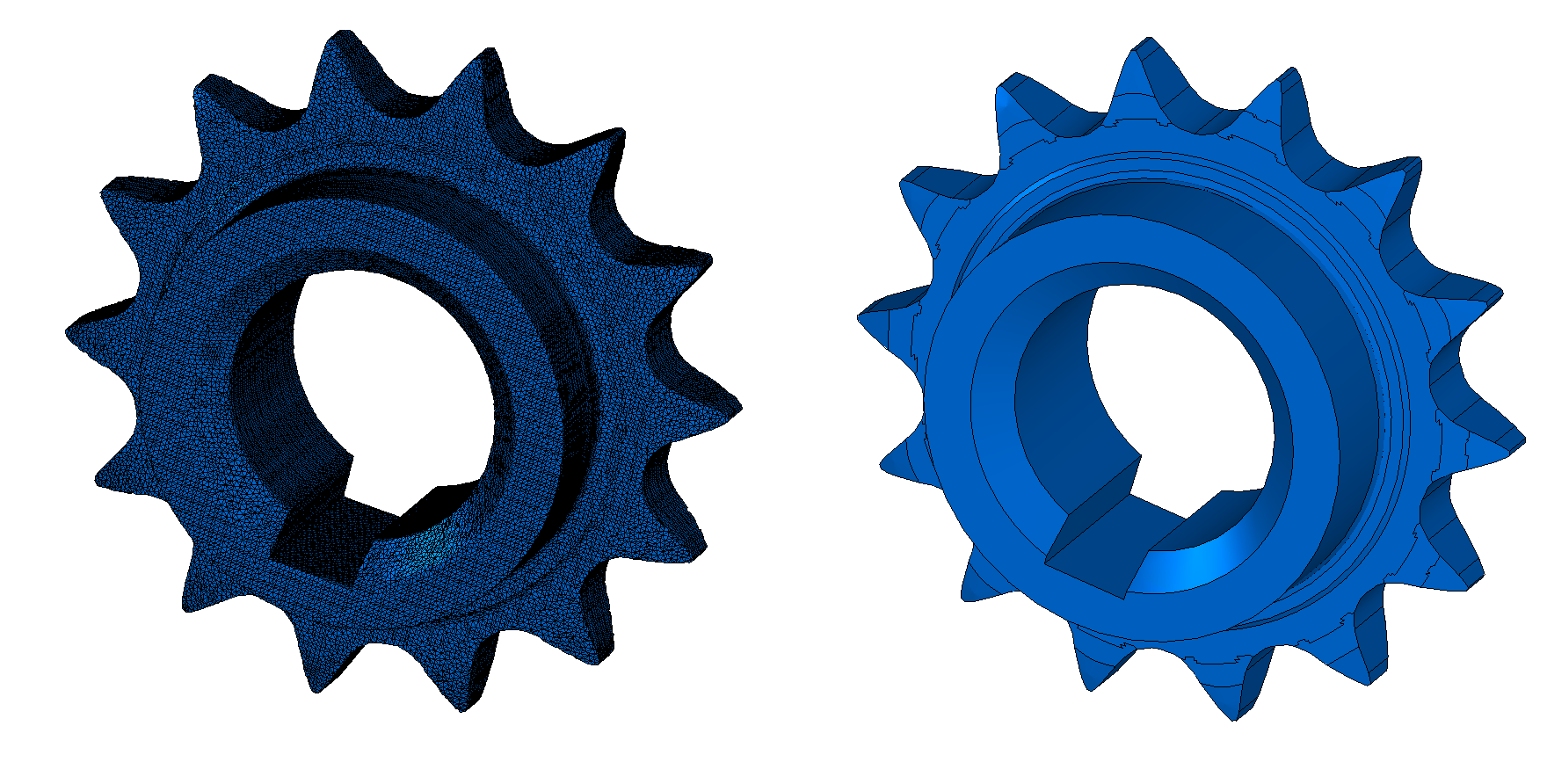
Polygonal mesh model and converted B-rep model
What’s new in C3D Modeler for 2019
C3D Labs updated its geometry kernel in the areas of modeling, projections, and performance.
Modeling. The key modeling feature added to the 2019 release is a new ability to section bodies with open shells. Now developers using C3D Modeler can cut off parts of bodies with sets of faces that are open.
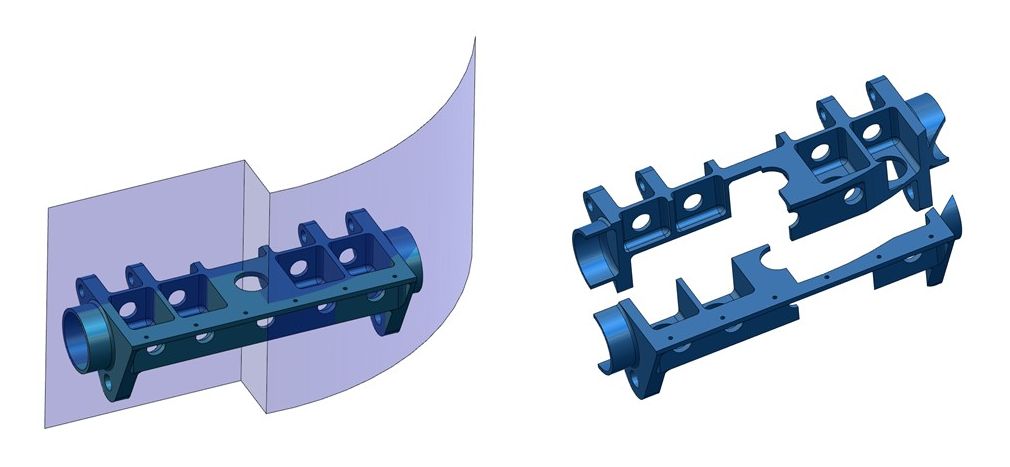
Sectioning a body with an open shell
Among geometric kernels, sheet metal modeling is unique to C3D Labs. The 2019 release added the ability to copy sheet metal body elements. As well, the way that flat patterns are simplified is improved, and there is a new construction of deflected reinforcement ribs on sheet metal bends.
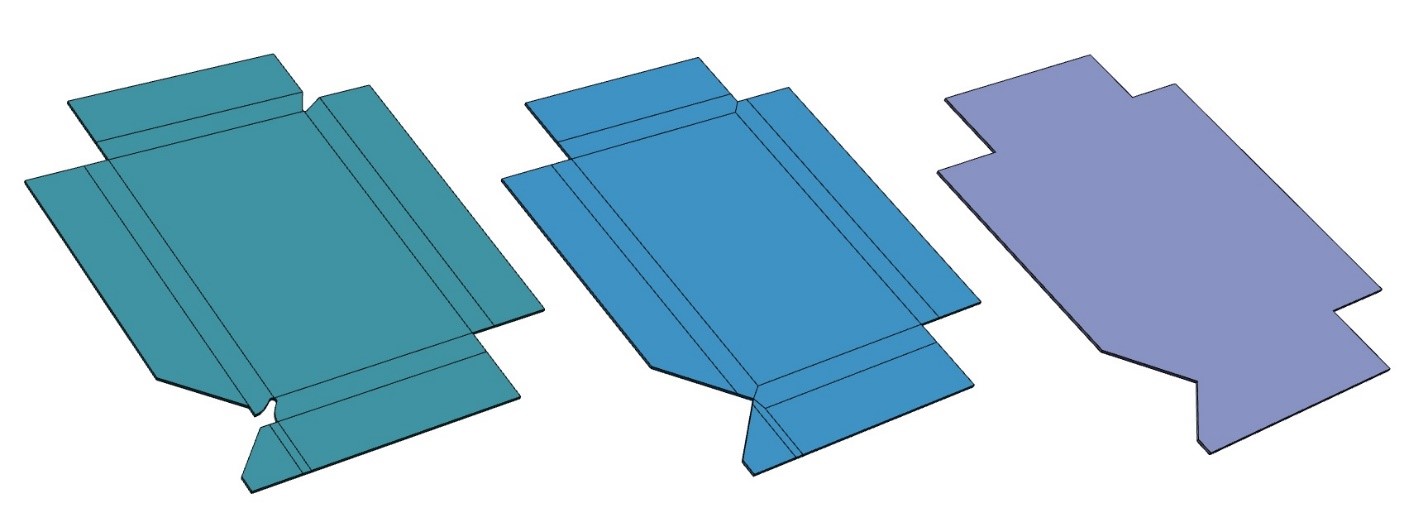
The simplification of flat patterns
Projections. A new projection tool projects axial lines, such as center lines, onto drawings. As well, the algorithms for projecting transparent bodies, cosmetic threads, and modified components of assemblies were improved. Users now can snap to attributes in section views.

Projecting the axial lines of surfaces into a drawing
Performance. Together with boosting the C3D Modeler’s algorithms, significant enhancements were made in kernel stability and performance:
- Garbage collection was implemented in multithreaded mode. (Garbage refers to data stored in memory that is no longer required by the application.)
- C3D files can now be saved as older versions. A file created by the newest version of C3D can be opened correctly in older versions of C3D, when users specify this during saving.
- The optimized build log eliminates data reuse.
What’s new in C3D Solver for 2019
The parametric kernel was updated to deliver new constraint solving and improvements to the API (application program interface).
Constraint Solving. The parameterization of wireframe models (used by pipelines in AEC/BIM applications, for instance) was enhanced with segments and arcs that are tied to fixed objects:
- Modified the API by adding the GCM_ALIGN_WITH_AXIAL_GEOM alignment option for patterns, which smoothly joins arcs and segments as a result of fewer calls.
- Expanded the test base with new 3D models from C3D Labs and those from customers.
- Improved the stability of algorithms with a better formulation of the internal systems of equations.
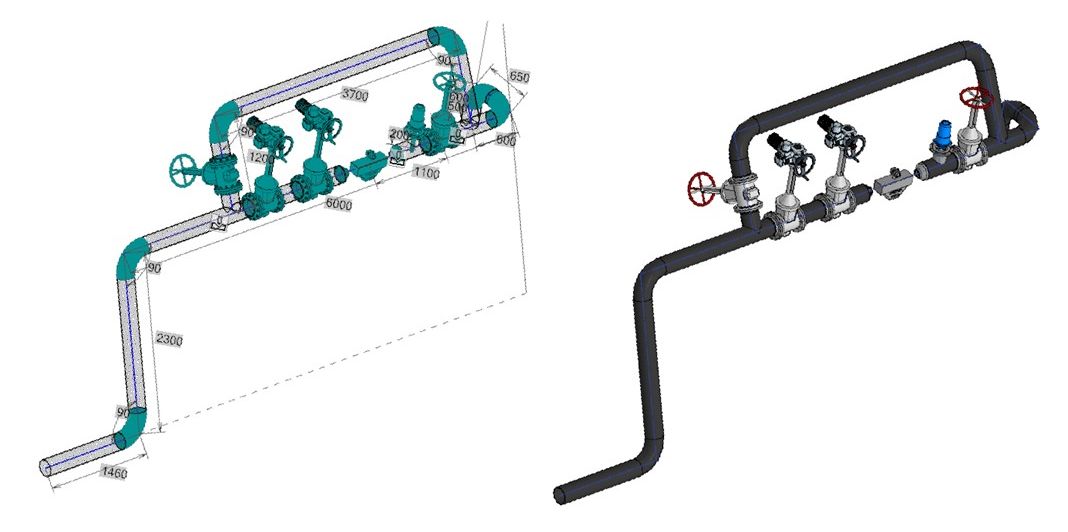
An example of wireframe model in C3D Solver
With a rewrite made to the internal equations system, constraints (such as tangency, distance, and points on circles) now work with circles of zero radius. This is handy, for instance, when working with hidden fillets in which parametric drawings may or may not have fillets. Circles with zero radius are also useful in increasing the accuracy of smooth junctions, thanks to the well-defined systems of equations.
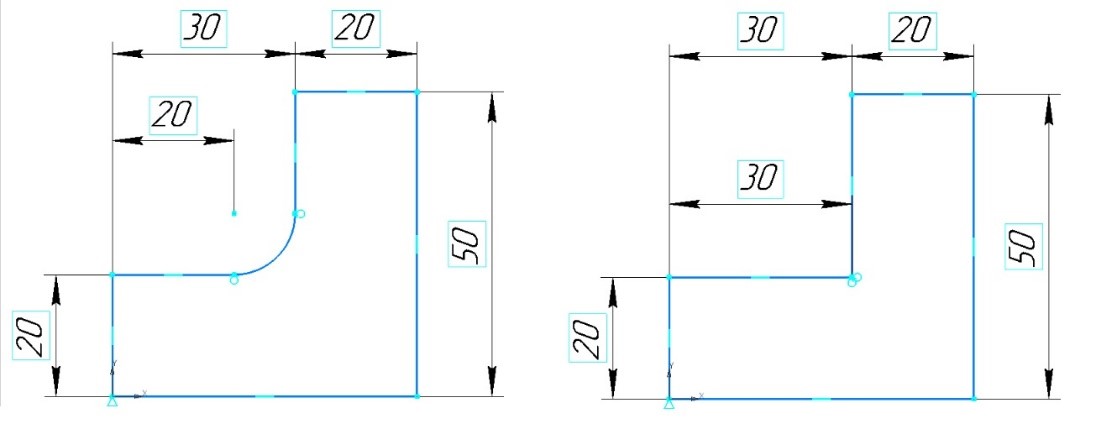
Hidden fillets in a drawing
API. In addition to direct calls, the API of C3D Solver 2019 now offers callbacks, which are similar in concept to functional programming. Both initial data and functions are transferred to the calculation module, through which requests for additional data can be made that are calculated later.
What’s new in C3D Converter for 2019
The key advances in C3D Converter module are support for PMI (Product Manufacturing Information), and improvements to SAT and topology.
PMI. C3D Converter 2019 expands on the transfer of PMI data in the JT file format. For parameters of leader lines, users can now specify the types of endings and the directions of the arrows, as well as to explicitly indicate the plane of the element’s placement. When specifying dimensions, their types, face values, tolerances, and units of measurement can now be specified.
SAT. For 3D models exported in SAT format, C3D Converter 2019 adds the ability to specify the topology according to the specifications of destination software, the program into which the files will be imported. As well, the update now transfers closed faces without forced-splitting of them, something that makes it better adapted to the specifics of the SAT format.
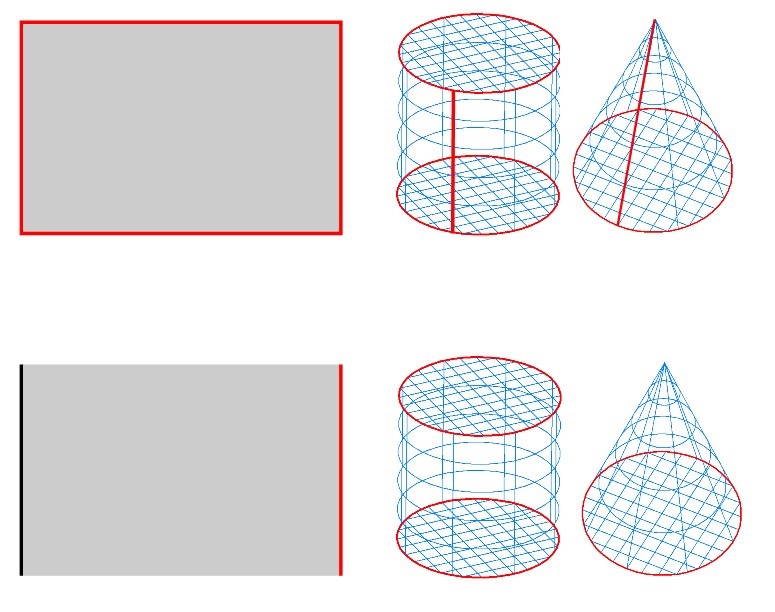
Poles and seams in C3D (up) and SAT (down below) formats
Topology. To detect and correct topology defects in the geometric model, new algorithms were added that take into account the specifications of exchange formats.
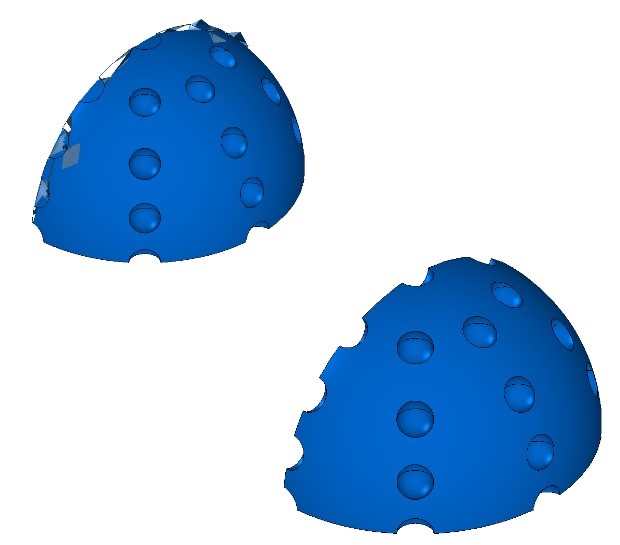
Correcting shell defects
What’s new in C3D Vision for 2019
The 2019 release of C3D Vision features closer integration with C3D Modeler, new tools, pen classes, and custom objects.
Closer Integration. The module is integrated more closely with the C3D Modeler geometric kernel. This enables visual representations that based on mathematical embodiments. It also generates scene graphs (based on mathematical models) with reference geometry automatically, and tracks the progress of scene generation.
New Tools. Perhaps the most important new feature is C3D Vision’s support for multilevel visualizations through the new MultiViews tool. Through the use of a single scene graph, one display model is used, and each view level has its own projection and its own scene display mode.
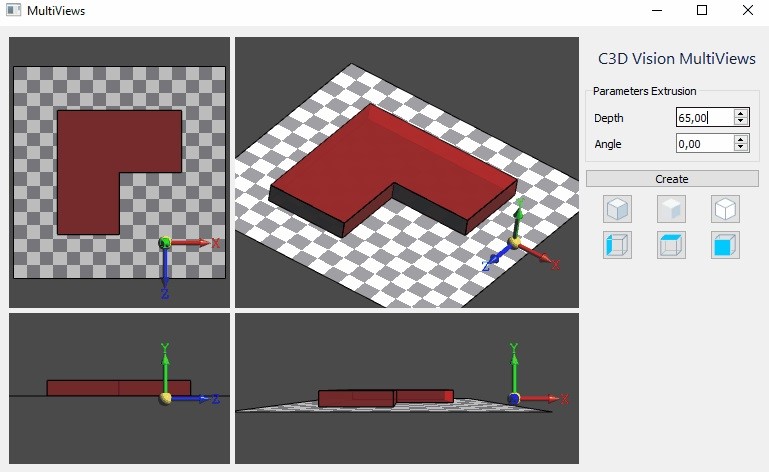
MultiViews tool in C3D Vision 2019
The SelectManager tool now provides color settings for primitives, highlights, and selected objects. In addition, object filtering and settings for physical devices for selection are available.
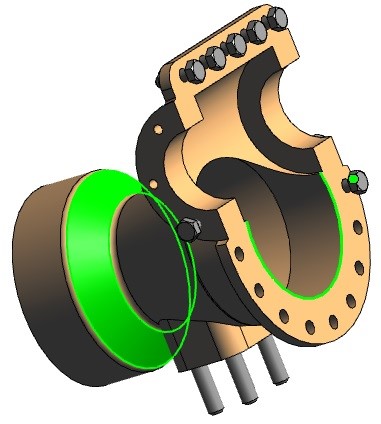
Selecting geometric objects
Pen Class. The new Pen class defines line styles through which developers can set line parameters, such as width and color. The visualizer offers line types that include solid, axial, dashed, dash-dotted line with two points, axial fat, and dashed fat.
Custom Objects. The streamlined software architecture of the visualization engine now allows developers to implement their own objects, as well as to program processes for creating and editing objects.
C3D Toolkit 2019 availability
The 2019 edition of C3D Toolkit is available now. The entire toolkit, as well as individual components, is available for testing in your programming environment at no charge. For details, see https://c3dlabs.com/en/evaluation/.
See also:
Permanent link :: http://isicad.net/articles.php?article_num=20720

|
 |